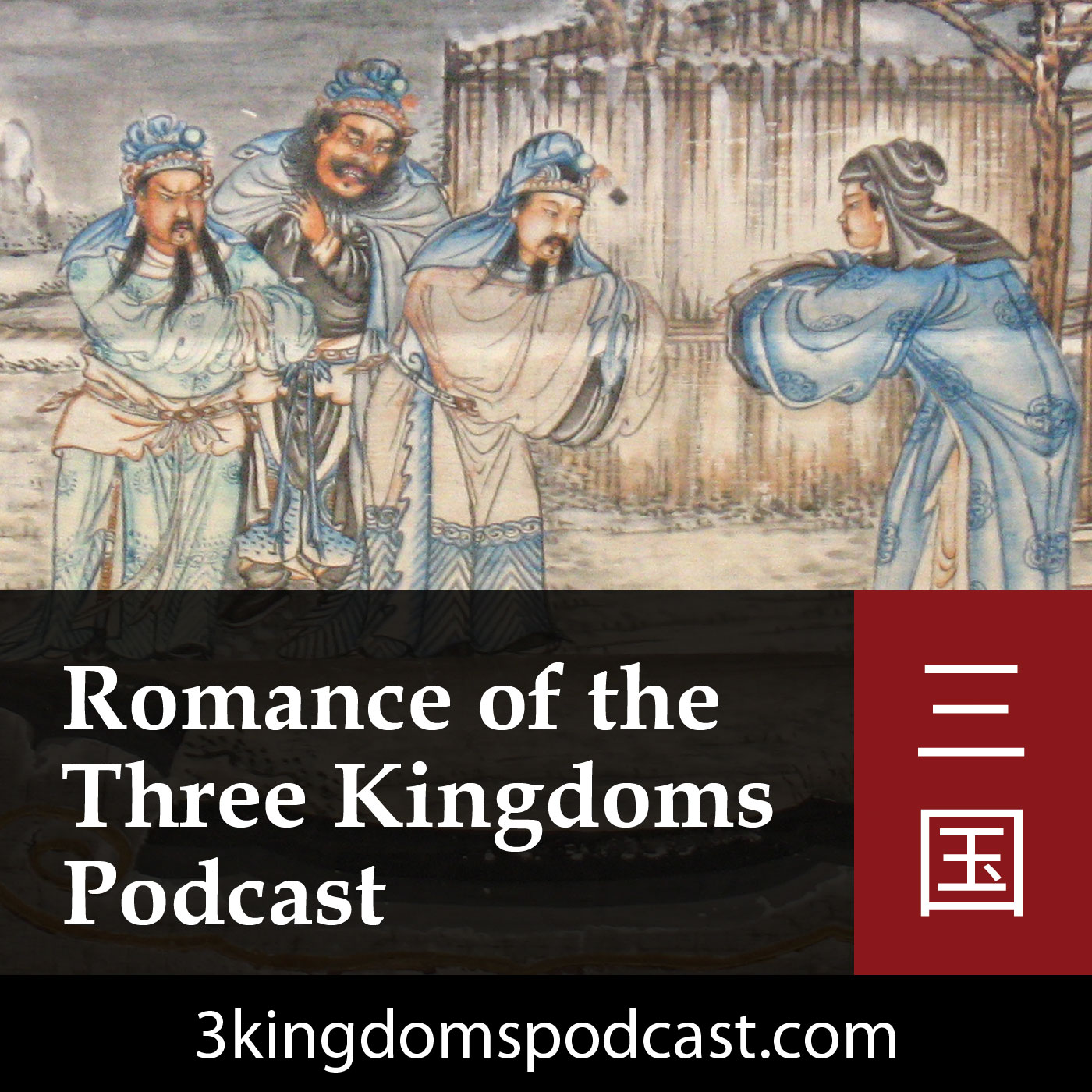Supplemental Episode 019: Three Kingdoms Food - Romance of the Three Kingdoms Podcast
Description
A look at what they ate and drank during the Three Kingdoms era.
* Transcript
* Video: A Bite of China: The Story of Staple Foods
Feast!
Transcript
PDF version
Welcome to the Romance of the Three Kingdoms Podcast. This is a supplemental episode.
In this episode, we’re going to take a look at food during the Three Kingdoms era. As we have seen throughout the podcast, food plays a significant role in the novel. It seems like every other scene we’re having a feast or a banquet for some reason or another. So let’s talk about what people ate in this era.
I should mention that much of the information for this episode comes from a book called Society and Life in the Wei, Jin, and the South and North Dynasties. I talked about those dynasties in the 100th episode Q&A. Together, they spanned the years between 220 and 589. That’s more than 350 years, so obviously, not everything in that book would apply to the Three Kingdoms period, which is at the beginning of the time period covered by the book. I’m going to do my best to limit our discussion to only things relevant to the Three Kingdoms period, but just know that some of the things we touch on might be more extrapolations based on what happened before and after the Three Kingdoms period, and I’ll note that when the information is about periods before or after the Three Kingdoms. It’s not an exact science, but we’ll do our best.
Before we talk about food, let’s first talk about the absence of food. The end of the Han dynasty was a time of chaos, warfare, and natural disasters, all of which contributed to mass-scale famines. We see this mentioned in passing in the novel on a few occasions, but it didn’t really get much attention. In real life, though, this was a serious problem.
For instance, there was a kid’s limerick that circulated around the region around the Yangzi River at this time that went something like this: “The armies are the size of cities; the dead bodies are like forests; it’s easier to get a hold of gold than millet, and millet is worth its weight in gold.” Yeah they didn’t exactly coddle the children back then, did they?
When regular food was not available, the people had to get creative. For instance, we have records of Yuan Shao’s men turning to mulberries for sustenance. Yuan Shao’s cousin Yuan Shu, however, had it even worse. His men apparently had to eat locusts. Of course today we’d look back and say that they were early practitioners of today’s eat-insect food movement.
But sometimes you can’t even find a swarm of locust to sate your hunger. In those situations, we have records indicating that desperate folks turned cannibalistic. Remember when a hunter served Liu Bei a piece of his wife for dinner because he couldn’t catch any game? That wasn’t just invented out of nothing; people apparently were forced to eat the dead on occasion during this time. And it didn’t end with the Three Kingdoms era either. With all the turmoil over the next 350-plus years, there were records of more cases of severe famine leading to instances of cannibalism.
Now that we have established that people were on the menu during times of severe food shortages, let’s talk about what they ate, aside from each other, during times that weren’t quite Walking Dead-level horrible. Now, these days, when you order Chinese, you get your meat-and-veggie dish, whether it’s beef and broccoli or sweet-and-sour chicken, and usually there’s a bowl of rice on the side.
More Episodes
Published 04/09/24
Published 04/09/24
Hi everyone. I want to let you know that I have posted the first episodes of Investiture of the Gods on the Chinese Lore Podcast. If you are not yet subscribed to that show, go to chineselore.com. You will find links to the show on various podcast platforms and on YouTube, as well as links to...
Published 10/17/22


